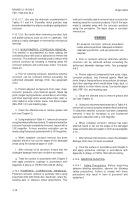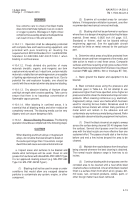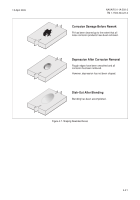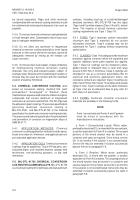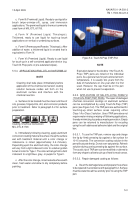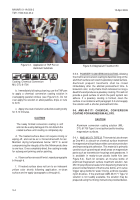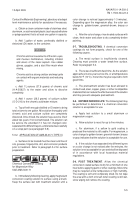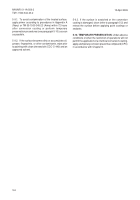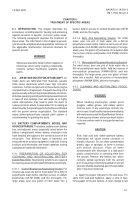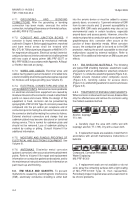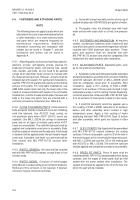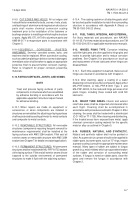TM-1-1500-344-23-2 - Page 103 of 240
5-5
NAVAIR 01-1A-509-2
TM 1-1500-344-23-2
15 April 2009
Contact the Materials Engineering Laboratory at a depot
level maintenance activity for assistance if necessary.
a. Obtain a clean container made of stainless steel,
aluminum, or acid-resistant plastic (such as polyethylene
or polypropylene) that is at least one gallon in capacity.
b. Add
1
⁄
2
gallon of water, preferably distilled or
deionized (DI) water, to the container.
WARNING
Chromic acid can cause burns of the skin, eyes,
and mucous membranes, including irritation
and ulcers of the nasal septum. Use rubber
gloves, goggles, and a dust filter mask when
mixing.
Chromic acid is a strong oxidizer and may ignite
on contact with organic materials and reducing
agents.
c. Add 1
1
⁄
3
ounces (37.8 grams) of chromic acid
(A-A-55827) to the water and allow to dissolve
completely.
d. Add 1 ounce (28.3 grams) of calcium sulfate
(O-D-210) to the chromic acid/water mixture.
e. Top off with enough distilled or DI water to bring
total volume to one gallon. Mix solution thoroughly until
chromic acid and calcium sulfate are completely
dissolved. Once mixed, the solution has a service life of
about two years if not contaminated. The solution can
be service life extended if it has not changed color,
separated into different layers, and is tested successfully
on a scrap part (see paragraph 5-8).
5-6.2. APPLICATION OF AMS-M-3171 TYPE VI.
a. Surfaces to be treated must be clean and free of
oils, greases, fingerprints, dirt, and corrosion products
prior to treatment. Refer to paragraph 5-2 for surface
preparation.
Chemical Conversion Coating
8
for Magnesium Alloy
SAE AMS-M-3171
b. Immediately following cleaning, apply magnesium
conversion coating solution to surface using a brush.
Keep the surface wet with treatment solution until a
color change is noticed (approximately 1-3 minutes).
Depending upon the magnesium alloy, the color can
change to
golden-brown, greenish-brown, brassy or
gray.
c. After the color change, rinse treated surfaces with
clean, fresh water and allow to dry completely before
painting.
5-7. TROUBLESHOOTING
. If chemical conversion
coatings do not form properly, check for one of the
following causes.
a. The metal surface is insufficiently cleaned.
Cleaning must provide a water break-free surface.
Refer to paragraph 5-2.
b. There was insufficient dwell time. As the solution
approaches its one year service life, or at temperatures
below 50
°
F (10
°
C), more time may be required to form
good films.
c. The pretreatment solution has been allowed to
contact lead, steel, copper, glass, or other incompatible
materials that can reduce the effectiveness of the solution
and may prevent adequate pretreatment.
5-8. EXPIRED SERVICE LIFE
. The following test may
be performed to determine if a chemical conversion
solution is acceptable for use.
a. Apply test solution to a small aluminum or
magnesium coupon.
b. Allow solution to react for up to five minutes.
c. For aluminum, if a yellow to gold coating is
produced the material is still usable. For magnesium, a
color change to golden-brown, greenish-brown, brassy
or gray indicates that the solution is acceptable for use.
d. If the solution has separated into different layers
or a color change is not noticed after five minutes, the
solution is not acceptable for use and shall be disposed
of in accordance with local hazardous material
regulations.
5-9. POST TREATMENT
. Allow the chemical
conversion coated surface to dry for a minimum of one
hour before applying paint or other coatings. More time
may be required at low temperature or high humidity.
The coating is soft until completely dried. Do not wipe
the area with a cloth or brush when coating is still wet,
since wiping will remove the coating.
Back to Top


